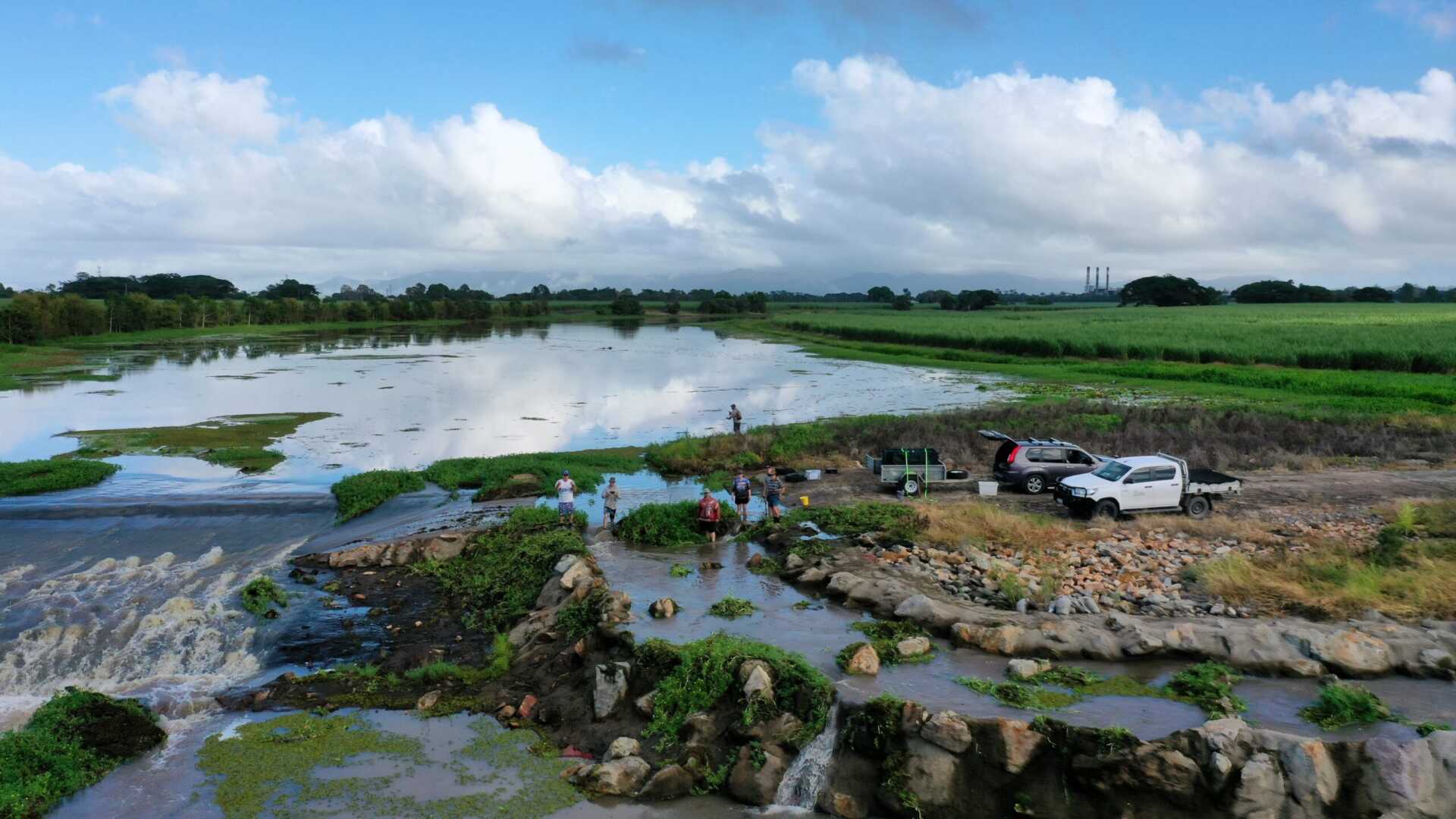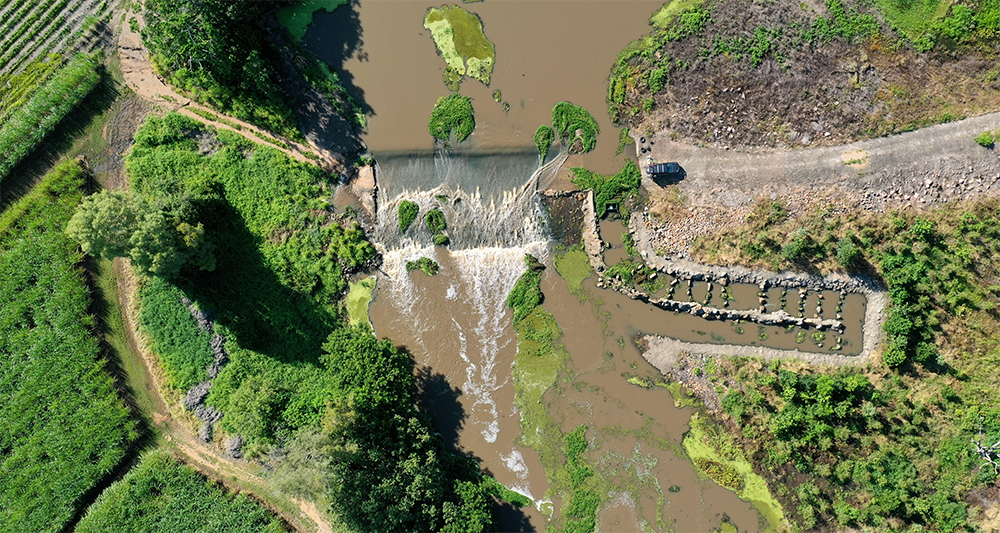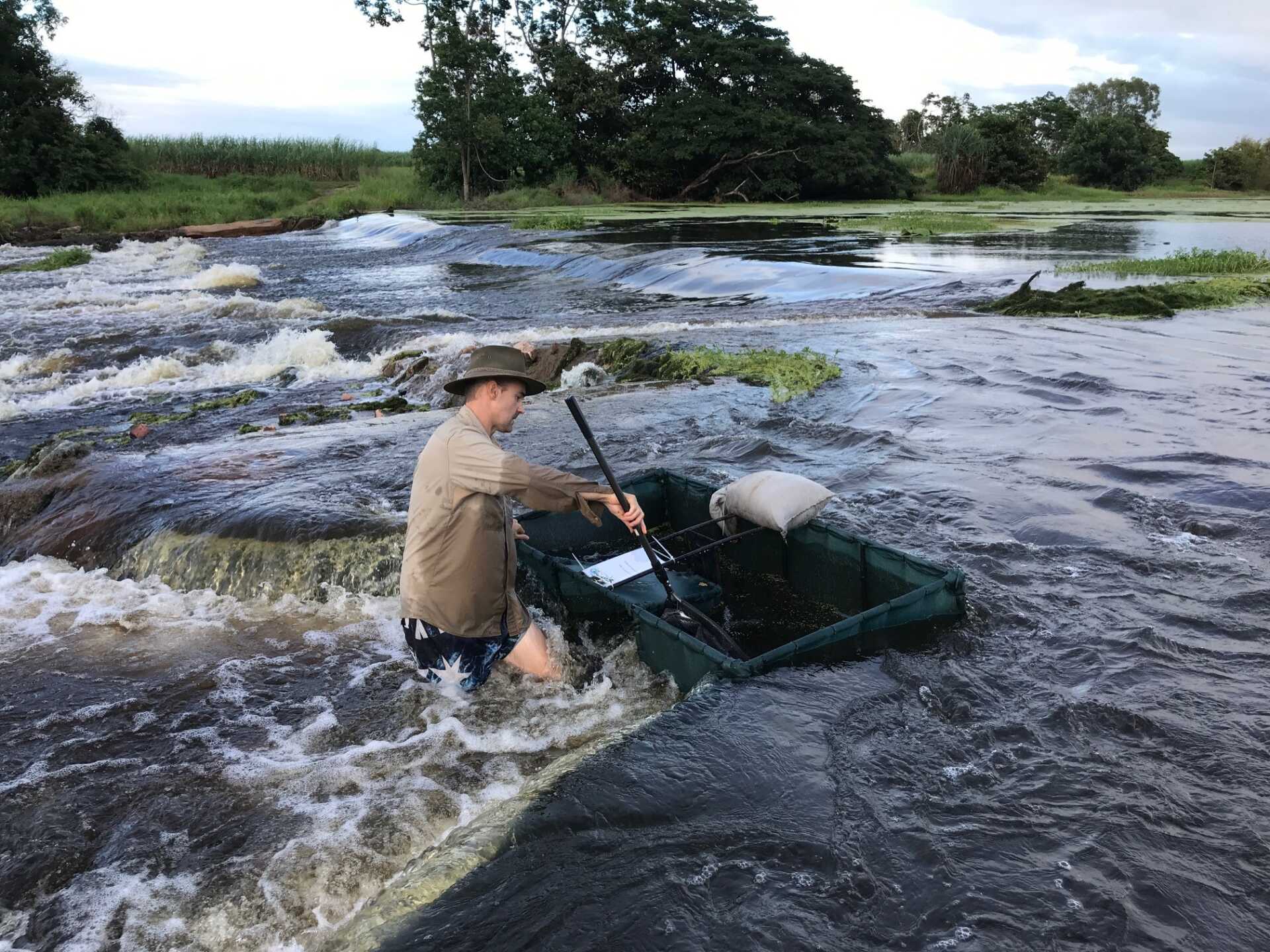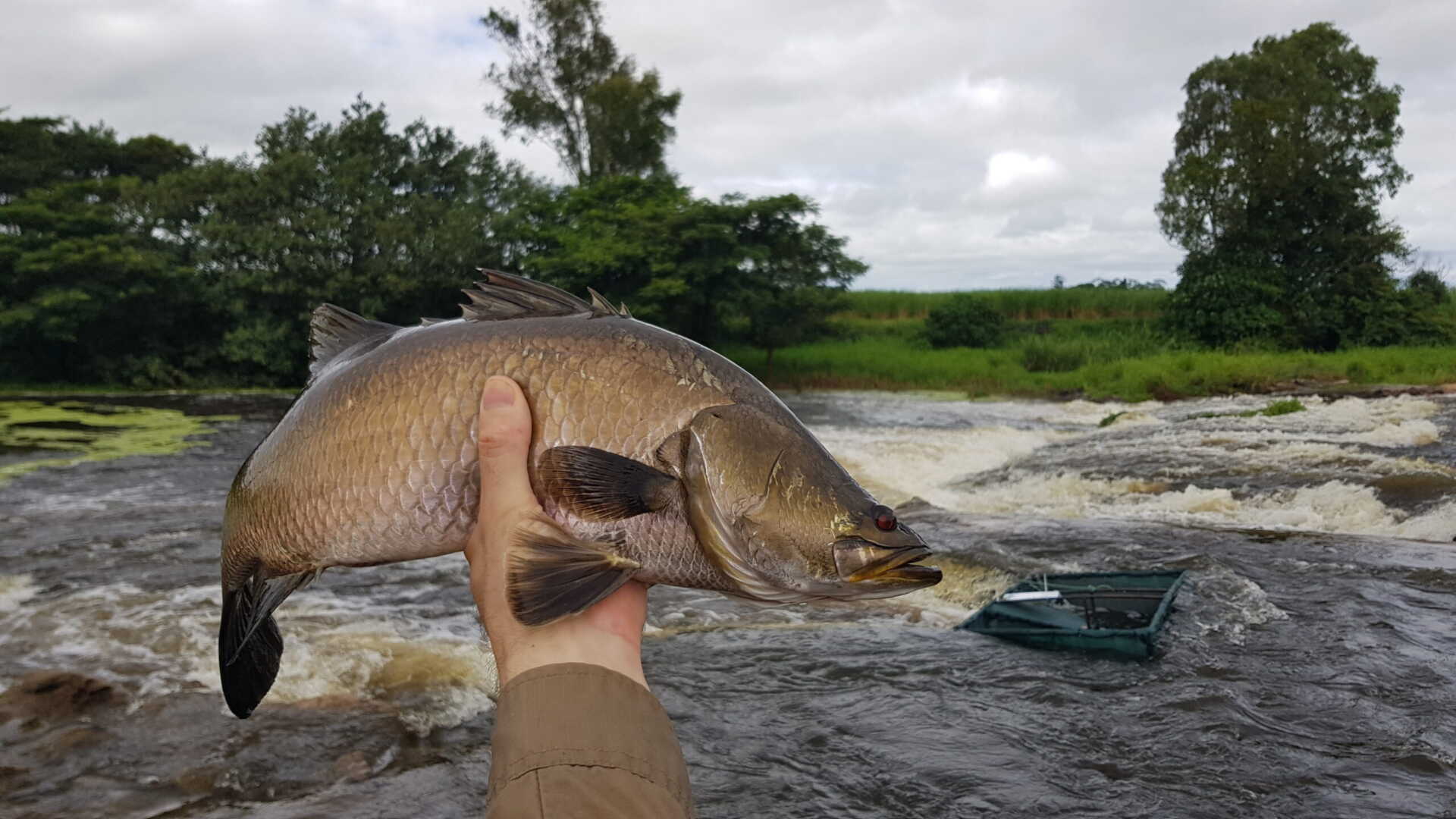Fishway benefiting barra at Palm Creek
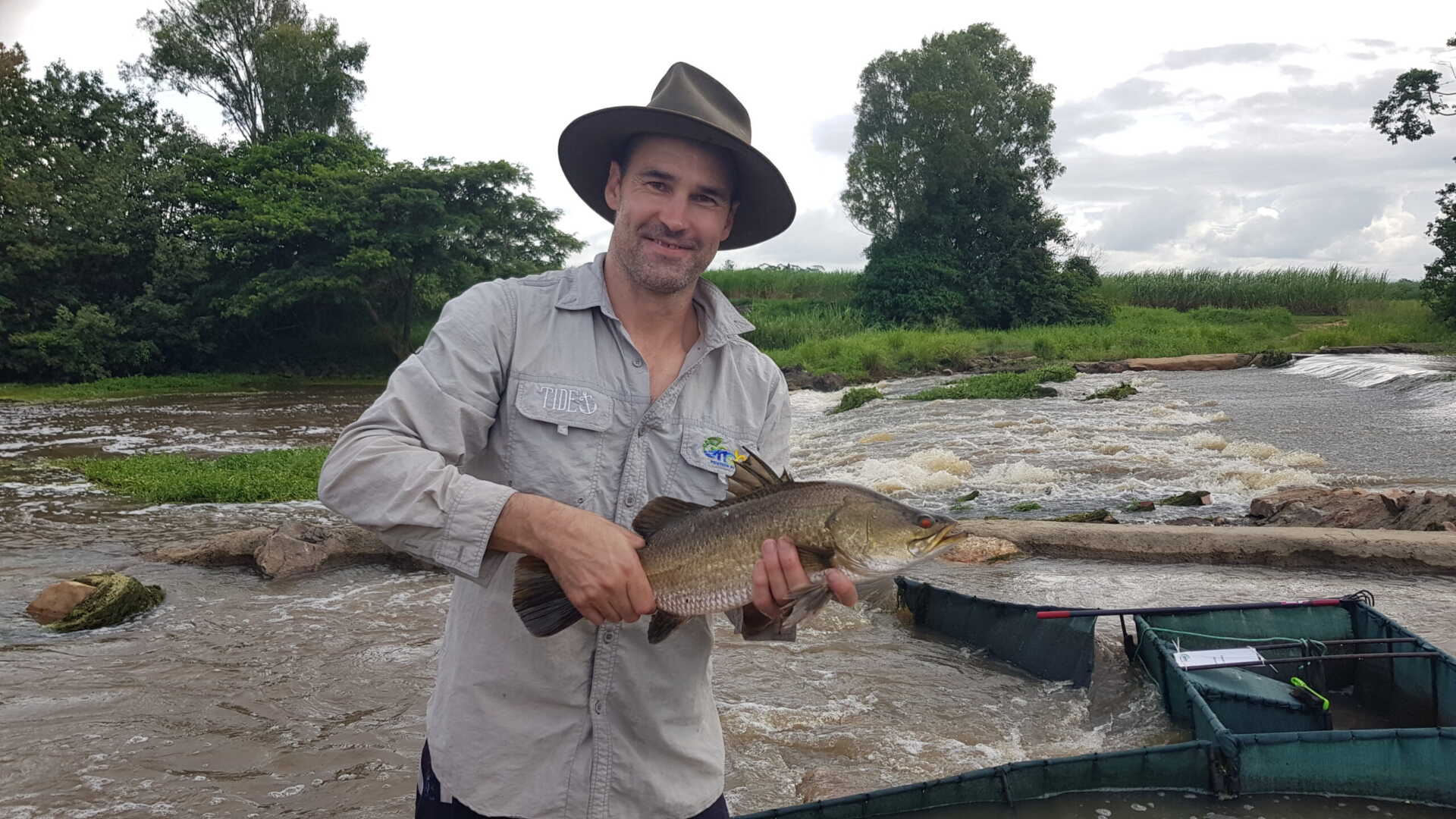
Think about the iconic barramundi, loved by recreational fishers and a favourite on the Aussie dinner table. As with all fish, barra rely on healthy habitat to survive and thrive and need access to different habitats at various stages of their life cycle.
In the tropics, fish species such as barramundi, tarpon and jungle perch undertake seasonal migrations in response to rainfall and changing flow conditions to feed and reproduce.
Throughout the tropical wet season, juvenile and sub-adult barramundi migrate upstream into freshwater wetlands to feed and grow, and adult barramundi migrate downstream into estuaries to spawn.
Barriers to fish passage prevent fish from undertaking these migrations and limit their access to important habitats that they require at different stages of their life-cycle.
Human development in coastal north Queensland has resulted in thousands of barriers to fish passage, restricting the ability of barra and many other fish species doing what they are naturally meant to do – migrate.
Recent research undertaken by a team of scientists from Queensland Government Department of Agriculture and Fisheries, James Cook University, and the University of Western Australia highlighted the importance of healthy freshwater habitats and fishways enabling barramundi to travel upstream.
For the past 2 years, OzFish Unlimited has partnered with Greening Australia to monitor a fishway constructed south-east of Ingham on Palm Creek. The waterway above the Palm Creek weir provides important habitat for many freshwater fish species. Palm Creek runs into the Great Barrier Reef lagoon south of Forrest Beach and is connected to the Herbert River during times of high flow.
The fishway adjacent to the Palm Creek weir was constructed in December 2019 and is allowing fish to access habitat above the weir that has been inaccessible for more than 60 years.
Seasonal monitoring by local OzFish volunteers has revealed several fish species across a range of life stages are using the fishway to, you guessed it — migrate.
During recent seasonal monitoring of the fishway, the OzFish North Queensland team has recorded 16 fish species using the fishway, including barramundi, tarpon, spangled perch, rainbowfish, empire gudgeon, bony bream and eel-tailed catfish.
The monitoring work has shown that the fishway is effective in providing fish passage during wet season flows for many fish species.
Constructing fishways such as this will increase the overall abundance of native fish by increasing the extent of accessible habitats.
OzFish will continue to monitor this fishway with the support of local recreational fishers. Recreational fishers who would like to participate in the project can join OzFish online today.

